DisneyResearch
Latest
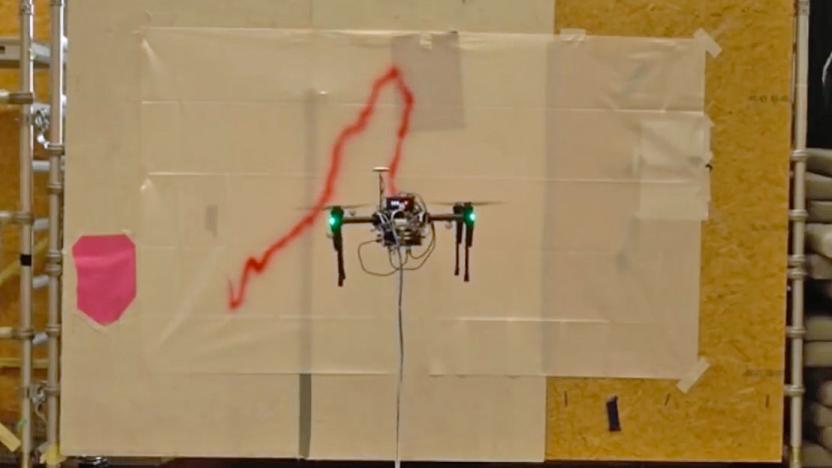
Disney’s spray-painting drone could end the need for scaffolding
We've seen some pretty interesting work come out of Disney Research in the past, like techniques for digitally recreating teeth, makeup-projecting lamps, a group AR experience and a stick-like robot that can perform backflips. One of its latest projects is PaintCopter -- a drone that can autonomously spray paint both flat and 3D surfaces. Disney Research says the goal is to be able to paint large surfaces without the need for scaffolding and ladders.
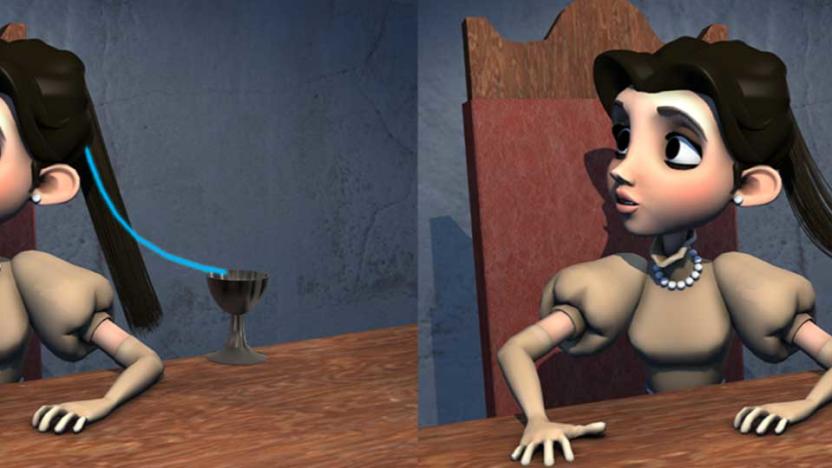
Disney reduces the chances of CG hair disasters
Movie studios often want computer-generated hair to have a specific effect, whether it's a seductive toss or a careless flick that knocks something over. But there's a problem: most rough-cut simulations don't realistically simulate hair, leading to a lot of guesswork and time-consuming edits. Disney (no stranger to hair-centric movies) has a solution, though. It developed a new system that can produce more authentic-looking simulations without an impractical boost to computation power. The trick, it turns out, was to use just a few cleverly controlled sample hairs.
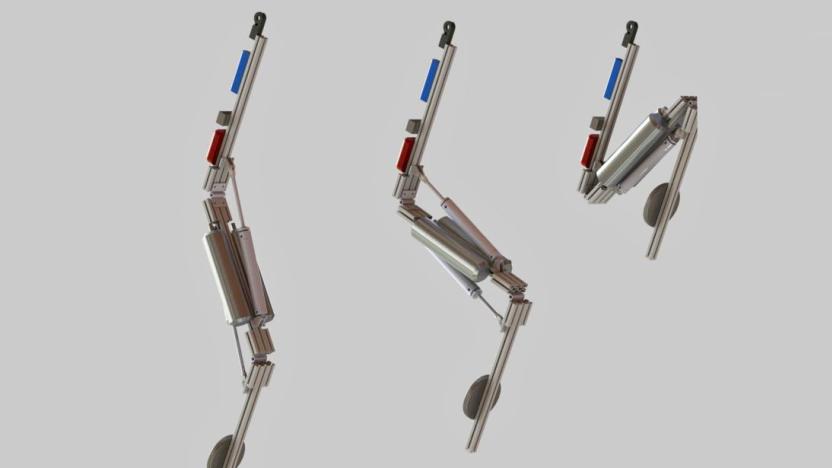
Disney's acrobatic robot can backflip like a human
Humans have mastered acrobatics for centuries, but robots? They've barely learned how to jump, and Disney Research wants to fix that. It recently developed a human-scale robot, Stickman, that can perform aerial stunts with a grace closer to that of its fleshy counterparts. Much like a person, it tucks into a ball in mid-flight to perform backflips and other stunts. A combination of inertial motion sensing and a trio of laser rangefinders give the robot motion and height data that help it decide when to untuck and land safely.
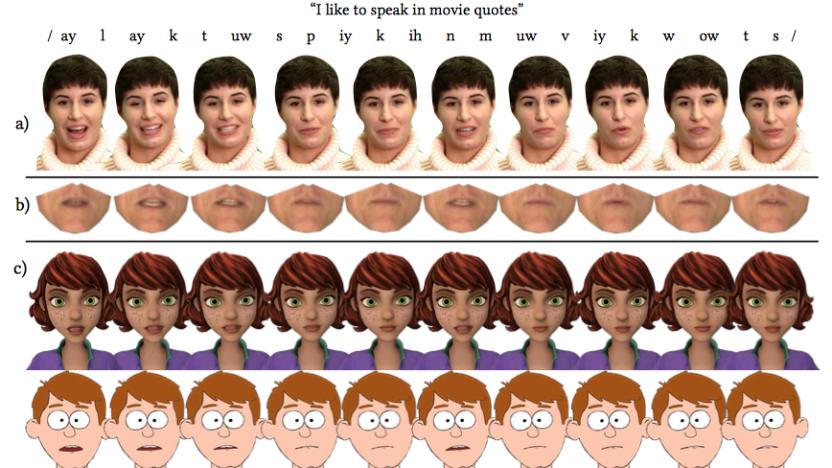
Researchers develop method for real-time speech animation
Researchers at the University of East Anglia, Caltech, Carnegie Mellon University and Disney have created a way to animate speech in real-time. With their method, rather than having skilled animators manually match an animated character's mouth to recorded speech, new dialogue can be incorporated automatically in much less time with a lot less effort.
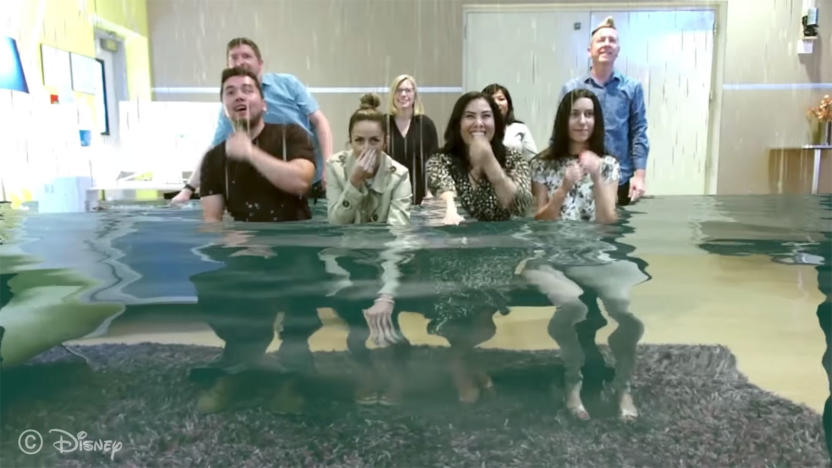
Disney plans to make augmented reality a shared experience
Augmented and mixed reality experiences tend to be solo affairs: you're either looking at your phone or wearing a headset. For Disney Research, that's not nearly social enough. Its scientists have created the Magic Bench, a blend of augmented and mixed reality that entire groups can share. It uses the combination of a camera and a depth sensor to produce a 3D recreation of you and the bench, letting virtual characters and objects interact with you as if they were there. And the seating is key to this -- it can tell the system how many people are present, where they're facing, and vibrate when a digital actor sits down. The activity you participate in depends directly on how many people are involved and what they're doing.
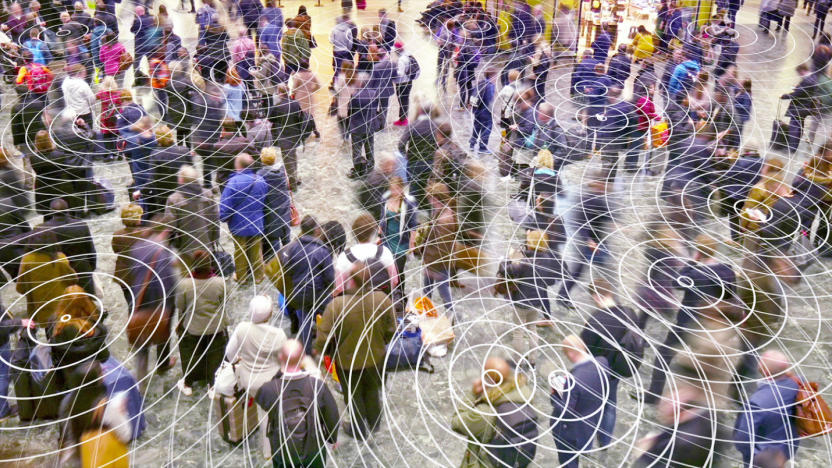
Your future devices might not need wireless radios
Seemingly every connected device has at least one wireless radio in it. However, that often requires some big compromises. Those radios often chew up a lot of power, which isn't always practical with Internet of Things gadgets that may not have much room for a battery. Disney Research may have a solution to that problem: ditch the radios entirely. Its scientists have developed technology that uses ambient radio waves to communicate. The approach uses very low-power sensor nodes to reflect radio waves from virtually any background source, whether it's a distant tower or the phone in your pocket. RFID tags already use a similar approach, but the use of many more sources and multiple channels gives you a much longer range -- in tests, the researchers achieved data links at distances up to 164 feet.
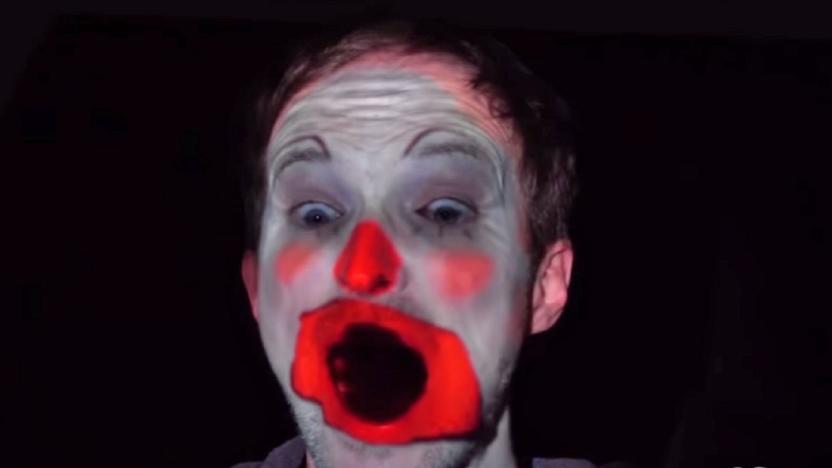
Disney's projection tech turns actors' faces into nightmare fuel
Disney is taking scary clown makeup to the next level. It's using a new projection system to transform the appearance of actors during live performances, tracking facial expressions and "painting" them with light, rather than physical makeup. Called Makeup Lamps, the system was developed by a team at Disney Research, and it could potentially change the way stage makeup is used in future theater productions.

Lightform computer brings glasses-free augmented reality 'anywhere'
We've seen some really neat results when it comes to projection mapping -- especially from this year's SXSW -- but new tech from former Microsoft and Disney employees could change the game. Lightform takes tech like IllumiRoom and what Disney Research and Razer have worked on prior and amps it up. At its core, Lightform is a camera that hooks up to "any video projector" via HDMI and works in tandem with it to display complex, interactive scenes on every day objects. Yep, even houseplants.
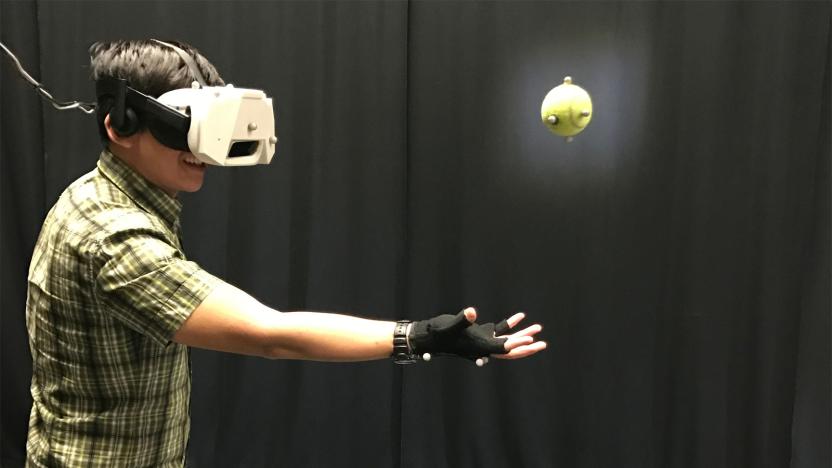
Disney shows how you catch a real ball in VR
It's relatively easy to boost the immersiveness of virtual reality by giving you gloves or props. But how would you have someone catch a real ball when they can't see where it's going? Disney Research has an answer: its scientists have developed a motion capture system that lets you grab a ball just as intuitively in VR as you would without a headset. Their approach uses sensors to track the movement of your hands, your head and the ball -- after that, it's a matter of using a motion prediction method to visualize where the ball is going.
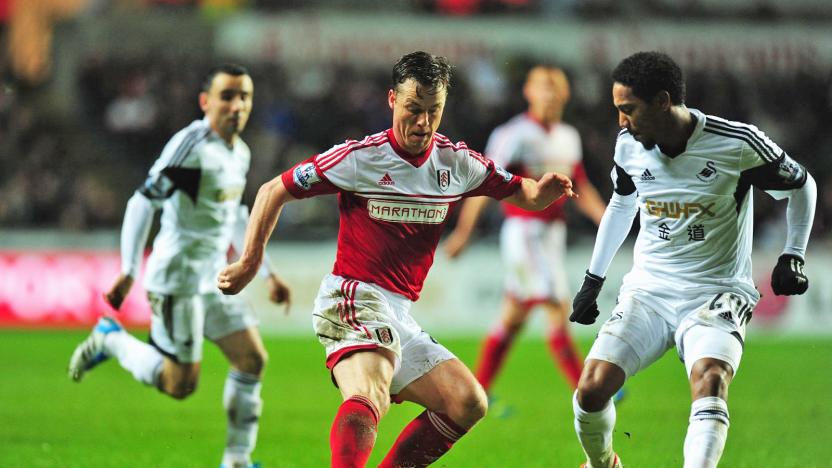
AI predicts how athletes will react in certain situations
When you think of sports analysis, you probably think of raw stats like time in the opposing half or shots on goal. However, that doesn't really tell teams how they should have played beyond vague suggestions. Researchers at Disney, Caltech and STATS believe they can do better: they've developed a system that uses deep learning to analyze athletes' decision-making processes. After enough training based on players' past actions, the system's neural networks can predict future moves and create a "ghost" of a player's typical performance. If a team flubbed a play, it could compare the real action against the predictive ghosts of more effective teams to see how players should have acted.
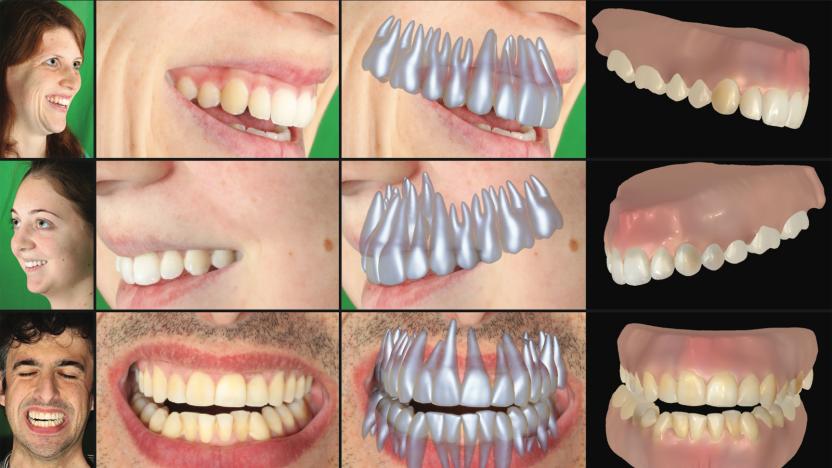
Disney can digitally recreate your teeth
Digital models of humans can be uncannily accurate these days, but there's at least one area where they fall short: teeth. Unless you're willing to scan the inside of someone's mouth, you aren't going to get a very faithful representation of someone's pearly whites. Disney Research and ETH Zurich, however, have a far easier solution. They've just developed a technique to digitally recreate teeth beyond the gum line using little more than source data and everyday imagery. The team used 86 3D scans to create a model for an "average" set of teeth, and wrote an algorithm that adapts that model based on what it sees in the contours of teeth in photos and videos.

Disney Research's AI system knows what a car sounds like
A picture may be worth a thousand words, but sound is just as important to how we experience the world as how we see it -- that's why a team at Disney Research is working on a computer vision system that can not only recognize what an image is, but how it sounds, too. In an initial study presented at the European Conference on Computer Vision, the group's system successfully managed to pair appropriate audio with images of doors closing, glasses clinking and vehicles driving down the road.

Disney makes facial capture tech more practical for movies
If you don't see facial motion capture everywhere in movies and video games, there's probably a good reason for it. In order to train a capture system to match expressions, you frequently have to record the actor making all kinds of faces in different conditions... that's a lot of effort, especially for studios that don't have much time or money. Disney Research has a better way. It recently developed a face capture system that uses only a tiny number of recordings and synthetically generates the data you need to train the system. The solution is a uniformly-lit multi-camera rig (only one camera is active, the rest are for lighting) that creates an adjustable 3D model of the actor's face that you can use to create the info you need.

Disney's one-legged robot will hop its way into your heart
Disney's research division revealed last year that one of the company's goals is to bring its fictional characters to life... as robots. Well, folks, we may now be witnessing the birth of a robotic Tigger. The House of Mouse's scientists have designed a bouncy machine with one leg that can hop around without support. It can only stay upright for around 19 hops before it adorably topples over, but according to its creators, other one-legged robots and aren't as portable and can't balance on a single limb without a tether.

Disney Research uses RFID tags for low-cost interactive games
Disney Research and Carnegie Mellon University have developed a way to use RFID tags to make interactive games and controllers so cheap, they're "essentially disposable." Their system called "RapID" can sense if you're moving or touching objects attached with cheap, battery-less RFID tags in near real time. RFID readers typically take up to two seconds to read tags on luggage or other items, but RapID can recognize movements in as little as 200 milliseconds.

Disney's remote control robots move just like people
Imagine walking into a Disney theme park and being greeted by Mike from Monsters Inc. A life-size Mike, perfectly spherically-proportioned on those spindly legs. Fitting a human into a costume like that is impossible. That's why Disney Research is building a new kind of haptic-feedback remote control system which will allow us to control robots as easily as we move ourselves.

Disney scanner identifies gadgets by their electromagnetic field
If someone placed your naked smartphone on a table alongside two identical models, how would you determine which one is yours? If you're an engineer at Disney Research, you would pull out a little scanner and immediately pinpoint the handset based on the noise it emits. It definitely sounds a little futuristic, but a team of researchers at Disney's innovation labs found that every single piece of technology has its own unique electromagnetic signal, even if they're exactly the same make and model, and built a radio scanner to read them.

Disney's robot car drives up walls
As clever as robotic cars may be, they have one obvious disadvantage over flying drones: their journey stops the moment they run into a wall. Disney Research and ETH Zurich have a clever workaround, however. Their prototype VertiGo robot uses two tilting propellers to drive up walls, adjusting its thrust to stick to the surface even if it has to travel over uneven surfaces like bricks. The result, as you'll see below, is uncanny -- all it takes is a quick push from the propellers to have this machine defying gravity.

Disney's FaceDirector changes facial expressions in movies
The new tool out of Disney Research's labs could turn an ingénue's semi-decent attempt into a finely nuanced performance. This software called FaceDirector has the capability to merge together separate frames from different takes to create the perfect scene. It does that by analyzing both the actor's face and audio cues to identify the frames that correspond with each other. As such, directors can create brand new takes during post-production with zero input from the actor. They don't even need specialized hardware like 3D cameras for the trick -- it works even with footage taken by regular 2D cams.

Disney Research has a faster way to render realistic fabrics
Computer graphics have come a long way, but there are still a few aspects that are pretty time consuming to get right. Realistic fabric movement that reacts to gravity and other forces is one of 'em and the folks at Disney Research have found a way to make life-like cloth simulations by six to eight times in certain situations. Walt's science department says that using a technique called multigrid, specifically, smoothed aggregation allowed it to make clothing worn by a main character or fabrics that make up the foreground of a scene at a much faster clip. There's an awful lot of science and equations behind the concept (PDF), but the long and short of it is that this should allow for more realistic cloth simulations that stretch and act like fabric does in the real world and even aid in virtual try-on situations.







